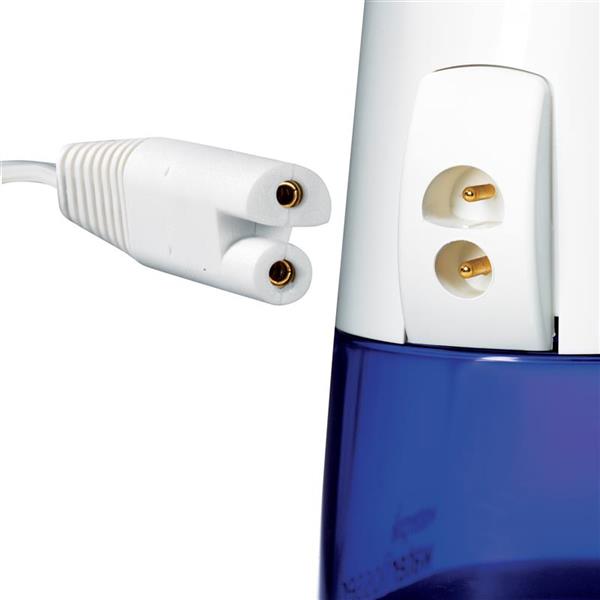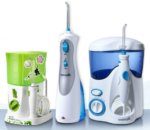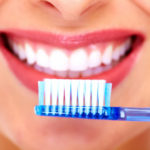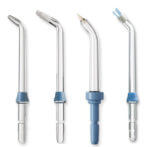Table of Contents
Oral hygiene is essential, and having a Waterpik device is an excellent way to ensure your teeth and gums are healthy. However, if your Waterpik device is not charging correctly, it can be frustrating and may impact its effectiveness. That’s why having a fully functional Waterpik charger is crucial.
In this article, we will cover everything you need to know about Waterpik chargers, including the different types available, how to choose the right one, how to use them, and how to troubleshoot common issues.

Types of Waterpik Chargers
Waterpik chargers come in different types, including USB, wall charger, and charging dock. The USB charger can be plugged into a computer, power bank, or any device with a USB port. The wall charger can be plugged into a socket, and the charging dock holds the Waterpik device in place and charges it through an electrical outlet.
The type of charger you choose may depend on your needs and preference. USB chargers are portable and can be used anywhere, while the wall charger and charging dock offer more stability and a faster charge time.
Waterpik chargers come in different types, each with its unique features and benefits. Here are the most common types of Waterpik chargers:
- USB Charger: A USB charger is a compact and portable option that can be used with any device with a USB port, such as a computer or power bank. This charger is ideal for those who travel frequently and want a convenient way to charge their Waterpik device on the go.
- Wall Charger: A wall charger is a more traditional option that can be plugged into a socket. This charger typically provides a faster charge time than a USB charger and is ideal for those who use their Waterpik device at home.
- Charging Dock: A charging dock is a convenient and stable option that holds the Waterpik device in place while charging. It typically plugs into an electrical outlet and provides a fast charge time. This charger is ideal for those who want a secure way to charge their device and keep it organized on a bathroom counter.
When choosing a Waterpik charger, consider your needs and preferences. If you travel frequently, a USB charger may be the best option. If you primarily use your device at home, a wall charger or charging dock may be a better choice. Additionally, ensure that the charger you choose is compatible with your specific Waterpik model.
How to Choose the Right Waterpik Charger

Choosing the right charger for your Waterpik device is critical. Ensure you select a charger that matches your device’s voltage and wattage requirements to avoid damaging it.
It’s also essential to check the charger’s input and output specifications to ensure they match the device’s requirements. For instance, if the input is higher than the device’s requirements, it may overheat or malfunction. Therefore, it’s crucial to double-check before purchasing a charger.
Choosing the right Waterpik charger is essential to ensure that your device charges correctly and safely. Here are some factors to consider when selecting a charger:
- Voltage and Wattage Requirements: Ensure that the charger you choose matches your Waterpik device’s voltage and wattage requirements. Using a charger with the wrong voltage or wattage could damage your device.
- Input and Output Specifications: Check the charger’s input and output specifications to ensure they match your device’s requirements. If the input is higher than your device’s requirements, it may overheat or malfunction.
- Charger Type: Decide which type of charger is most suitable for your needs, whether a USB charger, wall charger, or charging dock.
- Brand Compatibility: Use only Waterpik chargers that are compatible with your device’s brand to avoid any issues.
- Customer Reviews: Check online customer reviews of the charger you are considering to ensure that other users have had a positive experience with the product.
- Safety Features: Look for chargers that have safety features such as overcharge protection or short-circuit protection to ensure that your device is safe while charging.
By considering these factors, you can choose the right Waterpik charger that meets your device’s requirements and ensures safe and efficient charging.
How to Use a Waterpik Charger
Using a Waterpik charger is relatively easy. Plug the charger into the device’s charging port and plug the other end into an electrical outlet. Once connected, the device’s battery level should indicate charging. Allow the device to charge fully before use, and disconnect the charger once the battery is full.
Ensure you use the original Waterpik charger to avoid compatibility issues or damage to your device.
Using a Waterpik charger is a simple and straightforward process. Here’s how to use a Waterpik charger:
- Connect the Charger: Begin by connecting the charger to your Waterpik device. For a USB charger, insert the USB end of the charger into your device’s charging port. For a wall charger or charging dock, connect the charger’s cable to the charging port on your device.
- Connect to Power Source: Once the charger is connected to your device, plug the other end of the charger into a power source. For a USB charger, this could be a computer or power bank with a USB port. For a wall charger or charging dock, plug it into a wall outlet.
- Check Battery Level: Your device’s battery level should indicate that it is charging. If it doesn’t, try unplugging and reconnecting the charger.
- Allow Device to Charge: Allow your device to charge fully before using it. The charging time will vary depending on your device and the type of charger you are using.
- Disconnect Charger: Once your device is fully charged, disconnect the charger from both the device and the power source.
It’s essential to use the original Waterpik charger that comes with your device or a charger that is compatible with your device to ensure proper charging. Using an incompatible charger could damage your device or cause it to malfunction.
By following these simple steps, you can use your Waterpik charger correctly and keep your device fully charged for optimal performance.
Troubleshooting Common Waterpik Charger Issues
Sometimes, you may encounter issues when using a Waterpik charger. Some common issues include slow charging or the device not charging at all. In such cases, you can troubleshoot the issue by:
- Ensuring the charger is connected correctly
- Checking the device’s charging port for damage or debris
- Using a different charger or outlet
- Contacting Waterpik customer service for further assistance
While Waterpik chargers are generally reliable, there are some common issues that users may encounter. Here are some troubleshooting tips for common Waterpik charger issues:
- Slow Charging: If your device is charging slowly, try using a different charger or power source. Ensure that the charger’s input and output specifications match your device’s requirements. If the issue persists, there may be a problem with your device’s battery or charging port, and you should contact Waterpik customer service.
- Overheating: If your charger or device is overheating, stop using it immediately and unplug it from the power source. Allow it to cool down before using it again. If the problem persists, there may be an issue with the charger, device, or power source, and you should contact Waterpik customer service.
- Device Not Charging: If your device is not charging, ensure that the charger is connected correctly to both the device and the power source. Check for any damage or debris in the charging port. If the issue persists, try using a different charger or power source. If none of these steps work, there may be an issue with your device’s battery or charging port, and you should contact Waterpik customer service.
- Charger Compatibility: If you’re using a third-party charger that is not compatible with your device, it may not charge correctly or may damage your device. Always use the original Waterpik charger or a charger that is compatible with your device.
If you encounter any issues with your Waterpik charger or device, it’s always best to contact Waterpik customer service for further assistance. They can help troubleshoot the issue or provide a replacement charger or device if necessary.
Conclusion
In conclusion, having a fully functional Waterpik charger is crucial for maintaining your device’s effectiveness. Ensure you choose the right charger, use it correctly, and troubleshoot any issues you may encounter. With this guide, you can enjoy a healthy oral hygiene routine with your Waterpik device.





